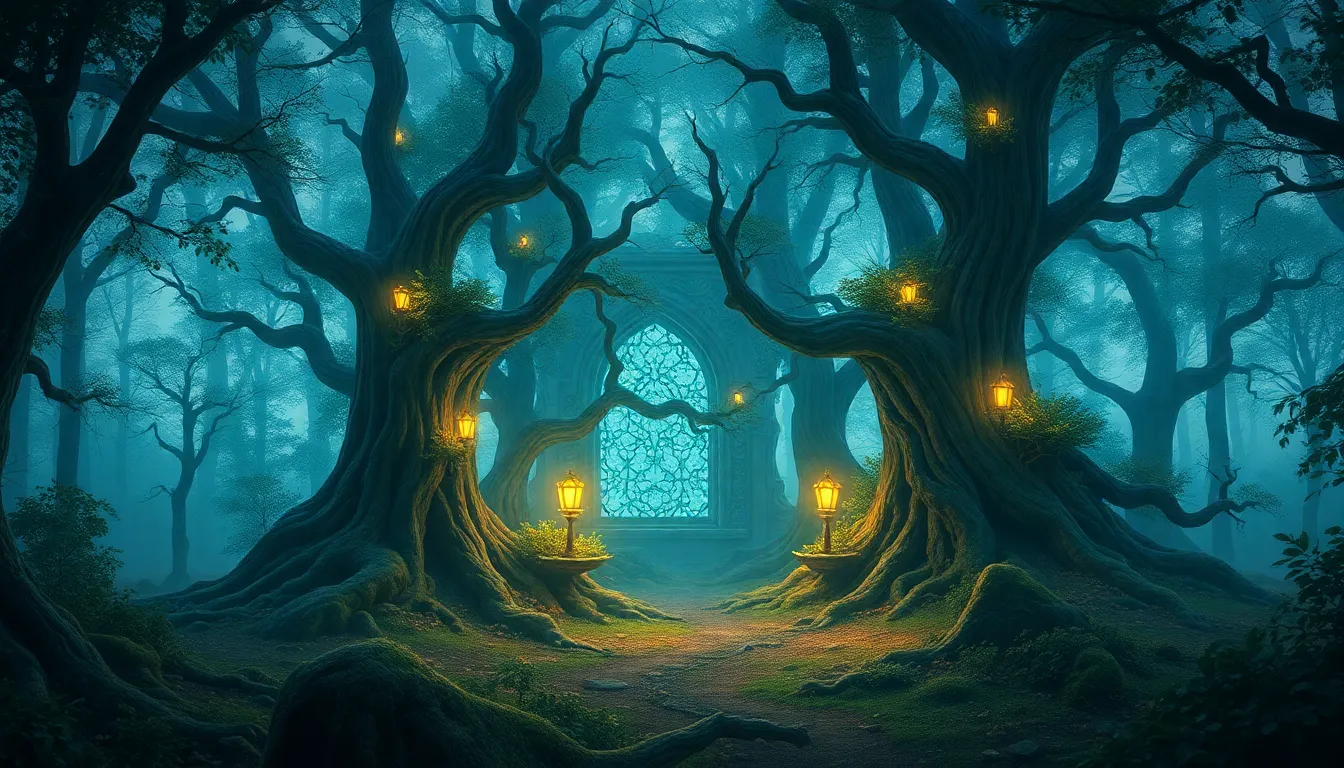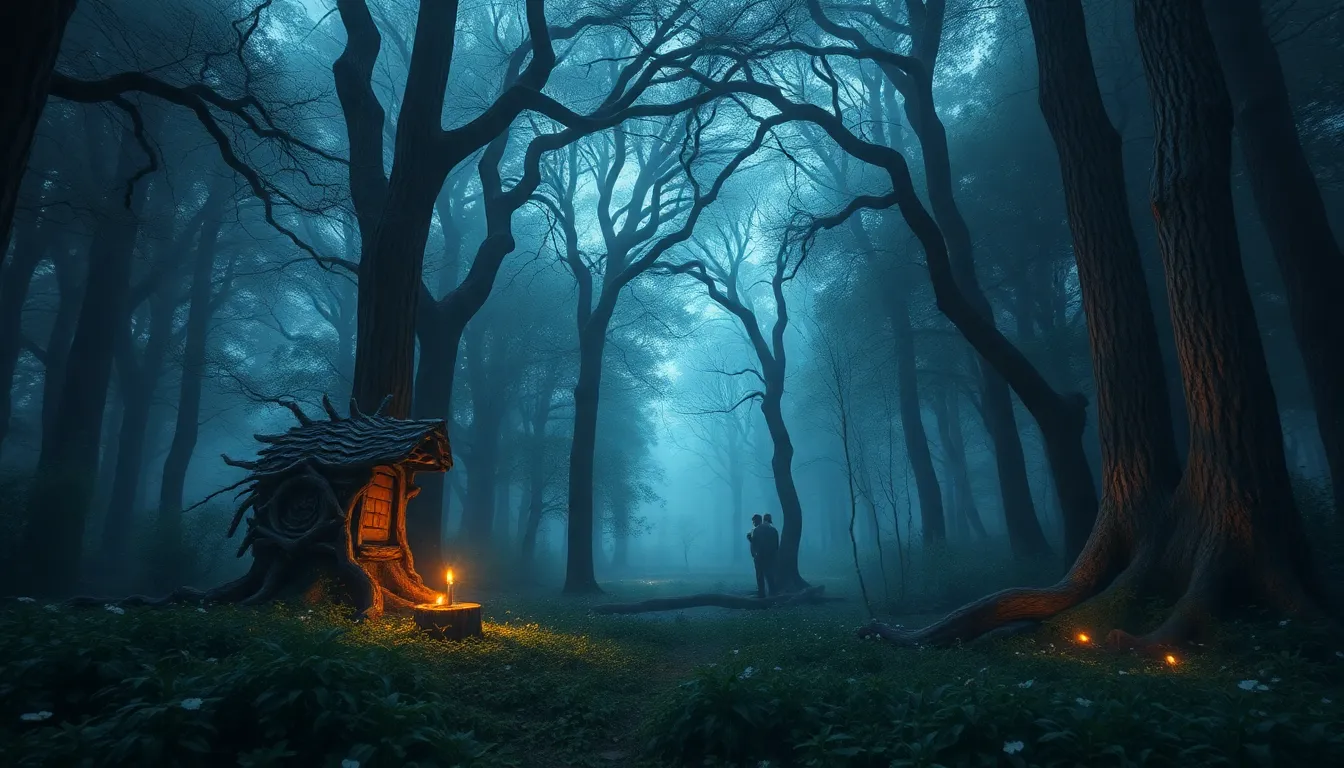The Role of Enchanted Forests in Ancient Mythologies
Introduction to Enchanted Forests
Enchanted forests are mystical woodlands that often serve as the backdrop for various mythological tales. These forests are characterized by their magical properties, often housing supernatural beings and serving as places where the natural and the otherworldly intersect. In many ancient mythologies, enchanted forests are not just physical spaces but also symbolic realms where transformation, adventure, and the unknown await.
Across cultures, enchanted forests hold significant meaning, representing both the beauty of nature and the hidden dangers that lurk within. They are spaces of mystery, often where heroes embark on quests, and where the line between reality and the supernatural blurs.
The Symbolism of Forests in Mythology
Forests in mythology often symbolize a complex duality: they can represent both danger and sanctuary, chaos and order. The woods are frequently depicted as:
- Mystery: Dark, dense woods evoke a sense of the unknown.
- Danger: Many myths feature characters who face perilous challenges within the forest.
- Transformation: Characters often undergo significant personal growth or change in these enchanted settings.
This duality allows enchanted forests to foster both good and evil, providing a rich tapestry for storytelling where characters can confront their fears, discover hidden truths, or encounter malevolent forces.
Cultural Variations: Enchanted Forests Around the World
Enchanted forests appear in various forms across different cultures. Here are a few notable examples:
- Norse Mythology: Yggdrasil, the World Tree, is a central cosmic tree connecting the nine worlds and is often described as a vast, enchanted forest.
- Celtic Mythology: The Otherworld is often depicted as a mystical realm accessed through enchanted woods, where time stands still and the ordinary rules of life do not apply.
- Greek Mythology: The sacred groves dedicated to deities like Artemis were considered enchanted, serving as places of worship and supernatural occurrences.
- Native American Lore: Many tribes view forests as sacred spaces inhabited by spirits, emphasizing a deep connection between nature and spirituality.
https://www.youtube.com/watch?v=edQ9vPaVbI8
Forest Spirits and Deities
Enchanted forests are often inhabited by various spirits and deities, each playing a unique role in the folklore of their respective cultures. Some notable figures include:
- Dryads: Tree nymphs from Greek mythology that are protectors of the forest.
- Satyrs: Half-human, half-goat creatures associated with Dionysian revelry, often found in woodland settings.
- The Green Man: A figure representing nature and the cycle of growth, often depicted in various ancient cultures as a symbol of rebirth.
These beings often embody the forest’s mystery and power, acting as guides or obstacles for heroes venturing into the depths of enchanted woodlands.
Enchanted Forests as Realms of Transformation
Enchanted forests frequently serve as settings for personal transformation, reflecting the hero’s journey as they navigate challenges and emerge changed. For example:
- The Labyrinth: In Greek mythology, the Labyrinth built by Daedalus is an intricate maze located in a dark forest, symbolizing the confusion and trials that heroes must overcome.
- Woods of Arcadia: Roman tales often depict these woods as idyllic yet treacherous, where characters encounter both beauty and danger, leading to self-discovery.
The Connection Between Nature and the Supernatural
Ancient cultures perceived enchanted forests as bridges between the natural and supernatural worlds. This connection is often represented through:
- Spirituality: Many cultures viewed forests as sacred spaces where the divine could be encountered.
- Supernatural Occurrences: Events such as visions, transformations, and encounters with deities often happen within these woods.
This interplay between nature and the supernatural has made enchanted forests vital settings for myth and legend, emphasizing the reverence ancient peoples held for the natural world.
The Role of Enchanted Forests in Folktales and Fairy Tales
Enchanted forests are prevalent in folktales and fairy tales, serving as settings for moral lessons and adventures. Classic stories include:
- Hansel and Gretel: A tale of survival and the dangers of straying from the path, highlighting themes of resourcefulness and resilience.
- Little Red Riding Hood: A cautionary story about the perils of naivety, illustrating the forest’s dual nature as both a place of wonder and danger.
These narratives often impart important lessons about courage, wisdom, and the consequences of one’s choices.
Enchanted Forests and Their Influence on Art and Literature
Throughout history, enchanted forests have inspired countless artists, writers, and musicians. Their mystical qualities evoke creativity and exploration. Notable works influenced by the theme of enchanted forests include:
- William Shakespeare’s “A Midsummer Night’s Dream”: A comedic play set in a magical forest filled with fairies and enchantments.
- J.R.R. Tolkien’s “The Lord of the Rings”: The forests of Middle-earth, particularly Fangorn and Lothlórien, are rich in enchantment and lore.
- Art by Caspar David Friedrich: His paintings often depict forests that evoke a sense of the sublime and the mystical.
Modern Interpretations of Enchanted Forests
Contemporary literature, film, and video games continue to reinterpret the concept of enchanted forests, often reflecting current themes of environmentalism and spirituality. Examples include:
- Films such as “Pan’s Labyrinth”: Combines fantasy with dark themes, showcasing the forest as both a sanctuary and a place of peril.
- Video games like “The Legend of Zelda”: Feature enchanted forests as central components of gameplay, where players navigate through magical landscapes filled with puzzles and lore.
This resurgence of interest highlights the continuing relevance of enchanted forests in modern storytelling, reflecting a renewed appreciation for nature and mythology.
Conclusion: The Enduring Legacy of Enchanted Forests
Enchanted forests hold a significant place in ancient mythologies, symbolizing the intersection of nature, the supernatural, and human experience. They are realms of transformation, danger, and beauty, serving as vital settings for countless stories that have been passed down through generations. Their enduring influence on culture and storytelling continues to resonate today, reminding us of the profound connection between humanity and the natural world.



